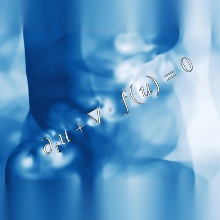Directly to
Team
Abstract
Hyperbolic balance laws have been proven to be an essential tool to understand phenomena in fluid dynamics.
However, many challenging problems in this context are still open and not properly understood. We want to mention turbulence, multiphase flows and the interaction of these flow phenomena.
Here we exemplarily refer to the well known Kelvin-Helmholtz instability or the Rayleigh-Taylor instability.
These are particular multidimensional problems appearing in inviscid flows and pose severe difficulties for the analysis and numerics of the considered hyperbolic balance laws.
Moreover, there are several different models available and used in the present literature to describe fluid flows exhibiting these flow features.
To provide well-founded insight in the obtained results and the relations between these models a thorough understanding is necessary.
Although the question of proper comparisons of models is ubiquitous only few result are available.
Here we propose to exploit the relation between two systems of hyperbolic balance laws widely used in the literature to model turbulence and multiphase flows.
We want to investigate a sharp interface limit from a hyperbolic diffuse mixture model to a sharp interface model for barotropic flows.
Precisely we investigate the vanishing volume fraction limit of the barotropic SHTC two fluid system and compare the obtained limit with the barotropic Euler equations.
In particular we will also consider flows with phase transition which is a phenomena also affecting turbulent behaviour.
The obtained results will promote insights in the relation between two large model families of nonlinear hyperbolic systems arising in fluid mechanics and provide a foundation for further comparisons.
From an analytical point of view it will help to transfer different results, e.g.\ obtained for the Euler equations to more complicated systems and we will gain insight into widely used diffuse mixture models with non-conservative terms.
Numerically the results will support future design of powerful numerical schemes that correctly preserve asymptotic states related to the studied limit and thus help to understand asymptotic flow regimes.
This proposal thus will provide a sound basis for the comparison of models and related results obtained in this priority program.
Hence it will contribute to the aim of unifying the model selection and further help to design schemes with desired asymptotic preserving properties.


